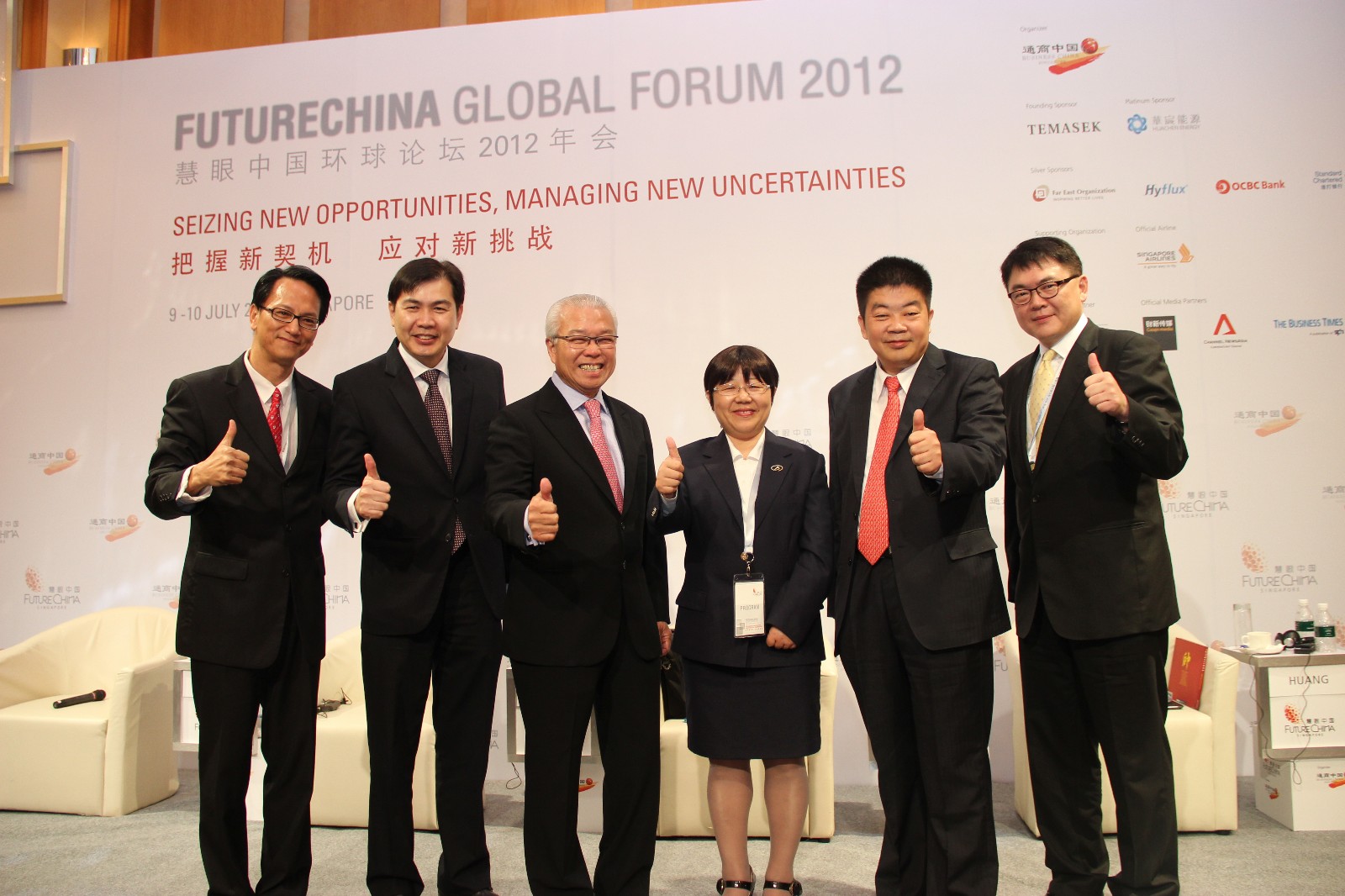2012-07-10
James Koh

Balancing act for govt and business As one of the world’s most populous countries and with a massive economy to boot, it comes as no surprise that China is also one of the world’s biggest consumers of energy and raw materials. The rapid pace of growth and development in the past 30 years has taken a toll on the environment. Recent Chinese estimates put the annual costs of pollution approaching 10 percent of the country’s GDP. With a burgeoning urban population and plans to quadruple its economy by 2020, China is facing a huge energy challenge. Beijing recognizes the importance of sustainable development. For several years now, China has been investing in green technologies. According to a World Wildlife Fund report, China ranked first in clean technology (cleantech) growth, with sales in 2011 reaching 57 billion euros ($70 billion), a substantial increase from 13 billion euros in 2010. The report ranks China as the first in absolute ranking for sales from manufacturing cleantech, ahead of the US, Germany, Japan and South Korea, with a “remarkable growth of 29 percent per year”. To bring home the importance of creating a sustainable economy, one of the key goals outlined in China’s 12th Five-Year Plan (2011-15) is to protect the environment and improve its energy efficiency. While the government has set the direction for developing green initiatives, the implementation at the local level is just as important, said business leaders. “You don’t stop at the central government; the provincial and municipal governments have to take over the ball and run with it. That’s the challenge,” said Oon Jin Teik, Group Executive Vice President and CEO China, of Singapore-listed Hyflux Ltd. Oon said the public-private-people partnership is crucial for the industry to “help influence and urge the government to come into the picture” to ensure the success of any sustainable project. He was speaking at a session titled China as a leader in green technology, moderated by Alexander Wan, senior advisor, China Daily Asia Pacific. Juliet Jiang, senior vice-president of China’s Broad Group, recalled the Chinese government’s initial less-than-enthusiastic sentiments about the company’s non-electric air conditioners using natural gas and waste heat, with zero carbon di-oxide emission. “But now, they are very supportive,” she said. The government’s policies are often retrospective, said Gao Jifan, CEO of China’s Trina Solar. This is because China’s structural landscape is different from Europe or the US. The Chinese State-owned enterprises are still the dominant players in many fields. The photovoltaics industry has been facing great challenges in the past few years, said Gao. They include oversupply, trade barriers, mass competition and general losses across the industry. But he is confident that solar energy is sustainable, not only as a clean source of energy but also as an industry. Gao believes that solar energy can escape the restrictions of the power grid. It is independent of the power grid, he said. As long as there is a roof, every family can harness the power of the sun. “In Germany, many people have turned to solar energy instead of relying on the power grid. That should be the way to go,” Gao said. The industry players are confident that clean and green technologies that are sustainable are the way of the future. The Broad Group, for example, has stuck its head out in introducing the Broad sustainable building (BSB). The largely pre-fabricated building derives its sustainability from eight aspects. It is earthquake resistant, conserves energy and uses construction materials free of formaldehyde, lead, radiation and asbestos. In addition, it is durable, saves on material and uses recyclable construction materials. Besides, it leaves no construction wastes and helps in air purification. In January, the Broad Group erected a 30-storey BSB hotel in Dongting Lake in Hunan, China in just 15 days. Jiang told a disbelieving audience at the FutureChina Global Forum that constructing the hotel was like “playing Lego on site”. Although the foundation is constructed the traditional way, 93 percent of the hotel was pre-fabricated. Most of the tiling, wiring and pipe work was done in the factory. “We did not have even one death,” Jiang proudly told the audience, alluding to the dangers of the construction industry. “Not even one fingernail got hurt.” Plus the site was dust-free and there was no welding. Where water is concerned, Hyflux’s Oon noted the Chinese government’s recognition that action was critical, given the severe water shortages in China and increasing consumer demand for quality and clean water. He believed that public sector investment, which has been strong, will play a bigger role in the coming future. Industrial players are aware of the challenges facing them in promoting and using green technologies. Gao reminded the audience that climate change is a global issue and most governments are working to address the issue. “Many industries and companies have to change their ways of doing things — of production, of manufacturing, and of living,” he said. “The key issue is how to conserve energy. It’s not just limited to solar energy, construction and water usage. It will become a social trend.” The main challenge then is to find a balance between sustainable environment, and industrial and economic development. And it is a challenge that will involve the government, public and private sectors. http://www.chinadailyasia.com/news/2012-07/13/content_115221.html